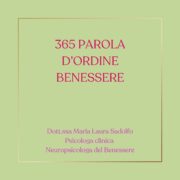365 Parola d’ordine Benessere



Dicembre ogni giorno un alimento:
Uova: Oltre le uova di gallina ci sono altri 15 tipi commestibili di uova.
Potresti usare uova di quaglia, di struzzo, d’anatra, d’oca e di tacchina.
Qualità:
È importante classificare le uova in base alla freschezza e ai sistemi di allevamento e saperle riconoscere per utilizzare le migliori.
Categoria A: uova fresche, di prima qualità.
Categoria B: uova di seconda qualità.
Categoria C: uova destinate all’industria.
In base ai sistemi di allevamento delle galline la classificazione è la seguente.
0: da allevamento biologico
1: da galline allevate all’aperto (una gallina per 2,5 metri quadrati)
2: da galline allevate a terra (sette galline per un metro quadro)
3: da galline in gabbia (25 galline per un metro quadro)
Benefici:
Le uova sono una delle fonti più complete di proteine.
Contengono la riboflavina, il selenio e la vitamina K. Sono inoltre ricche di colina, un nutriente ha un ruolo importantissimo nella funzione cognitiva e nel mantenimento della concentrazione. La colina è coinvolta nella produzione di neurotrasmettitori e nella struttura delle membrane cellulari.
Sono sazianti, sono importanti per la crescita e lo sviluppo, contengono gli amminoacidi essenziali di cui il corpo ha bisogno.
Consumo:
Dalle 2 alle 4 uova alla settimana.
Non consumare in caso di allergia.
~
December one food every day:
Eggs: Besides chicken eggs there are 15 other edible types of eggs.
You could use quail, ostrich, duck, goose and turkey eggs.
Quality:
It is important to classify eggs based on freshness and farming systems and know how to recognize them in order to use the best ones.
Category A: fresh, top quality eggs.
Category B: second quality eggs.
Category C: eggs intended for industry.
Based on the hen breeding systems, the classification is as follows.
0: from organic farming
1: from free-range hens (one hen per 2.5 square metres)
2: from free-range hens (seven hens per one square metre)
3: from caged hens (25 hens per square metre)
Benefits:
Eggs are one of the most complete sources of protein.
They contain riboflavin, selenium and vitamin K. They are also rich in choline, a nutrient that plays a very important role in cognitive function and maintaining concentration. Choline is involved in the production of neurotransmitters and the structure of cell membranes.
They are satiating, they are important for growth and development, they contain the essential amino acids that the body needs.
Consumption:
2 to 4 eggs a week.
Do not consume in case of allergy.
~
12月每天一种食物:
鸡蛋:除了鸡蛋之外,还有 15 种其他可食用的鸡蛋。
你可以使用鹌鹑蛋、鸵鸟蛋、鸭蛋、鹅蛋和火鸡蛋。
质量:
根据新鲜度和养殖系统对鸡蛋进行分类并了解如何识别它们以便使用最好的鸡蛋非常重要。
A 类:新鲜、优质的鸡蛋。
B类:二等品质鸡蛋。
C 类:工业用鸡蛋。
根据母鸡饲养系统,分类如下。
0:来自有机农业
1:来自散养母鸡(每2.5平方米一只母鸡)
2:来自散养母鸡(每平方米七只母鸡)
3:来自笼养母鸡(每平方米25只母鸡)
好处:
鸡蛋是最完整的蛋白质来源之一。
它们含有核黄素、硒和维生素 K。它们还富含胆碱,这种营养素在认知功能和保持注意力方面发挥着非常重要的作用。胆碱参与神经递质的产生和细胞膜的结构。
它们具有饱腹感,对生长和发育很重要,含有人体所需的必需氨基酸。
消耗:
每周2至4个鸡蛋。
如有过敏情况请勿食用。
